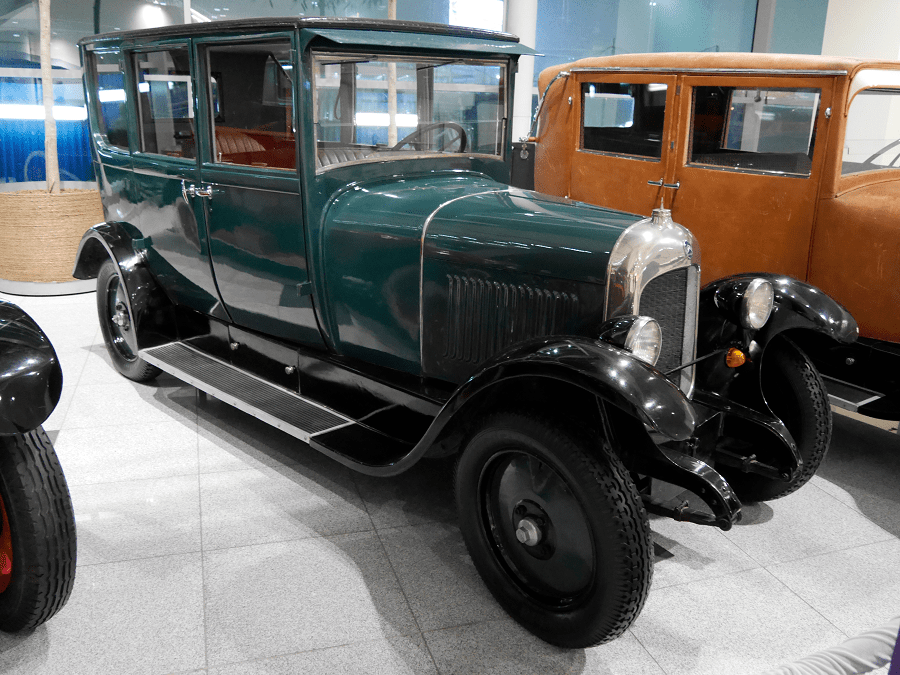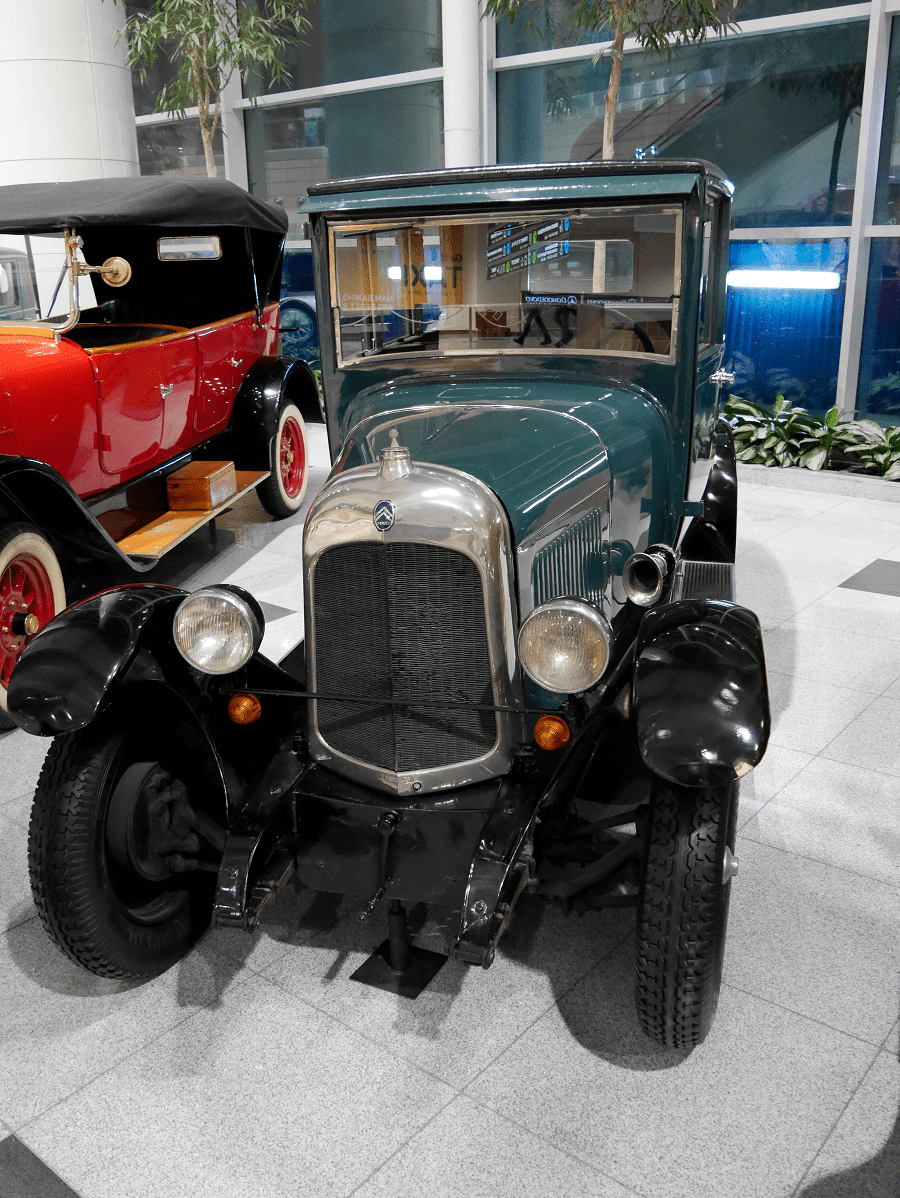Green Citroën B Conduite intérieure. Made in 1925. The first European car with a full metal body
Weight: 1200 kg
Max. speed: 70 km/h
Engine: 1452 cc
Power: 20 HP
The Citroën B12 is an automobile produced by Citroën at André Citroën’s factory in central Paris, and available for public sale between October 1925 and January 1927. 38,381 were produced.
Major competitors included the Peugeot 177 and the Renault KZ.
The B12 was manufactured using modern mass production technologies which in France at the time, were still unique to Citroën. It also used “all-steel” (“tout-acier”) bodies for its two most popular body types.
First displayed at the Paris Motor Show in October 1925, the Citroën B12 shared its chassis and engine with the B10, which it replaced.
The size of the 4-cylinder engine remained at 1,452 cc, and as with the earlier model, the B12 was sometimes known as the Citroën 10HP (or 10CV), the HP in the suffix being a reference to its fiscal horsepower, a number computed according to the cylinder diameters and used to define its taxation class.
A range of body types was listed, although most of the cars came with “Torpedo” type or “Conduite Intérieure” (two-box saloon/sedan) bodies. Other body types listed were a cabriolet, a “Torpédo commercial” and something called a “Normande”.












